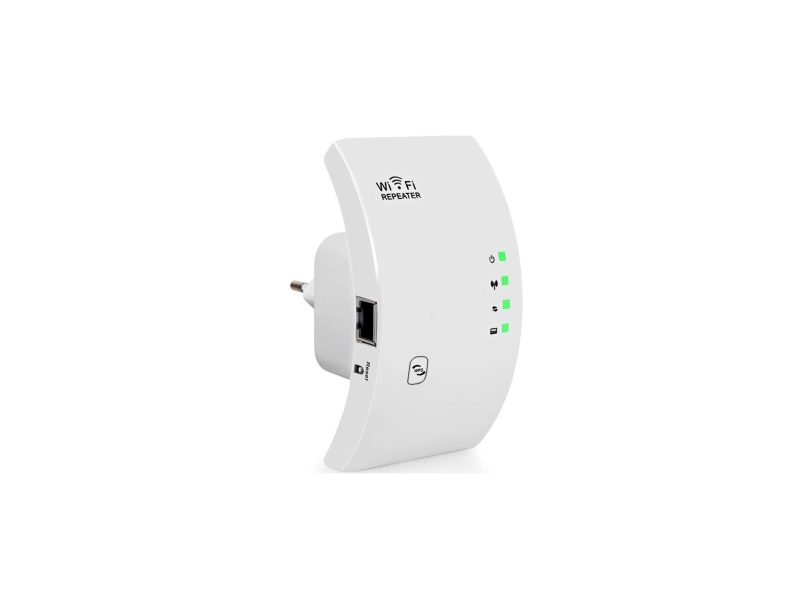What is WiFi amplifier?

Internet is totally essential for many people who work through it or who need to be connected with theirs, etc. With the advent of wireless networks, coverage has become an additional problem, since routers do not reach all parts of a home or office, as you may have seen. However, there are so-called WiFi extenders or amplifiers that can help you with this.
What is a WiFi amplifier
WiFi amplifiers are a class of wireless repeater devices that capture the WiFi signal from your router or an access point and replicate it, in order to expand the range of the wireless network, that is, so that the coverage reaches more far.
In other words, its operation is simple, it captures the signal received from the WiFi and replicates it by transmitting it with greater power, to become a source of coverage for connected devices that are too far from the main WiFi signal. You may also be interested in the other great alternative to WiFi amplifiers, such as PLCs.
Buying guide for the best WiFi amplifiers
One of the first things to look at is compatibility with your router. That is, the version of WiFi or IEEE 802.11 that it supports. For example, if your router is WiFi 5 or IEEE 802.11ax, then the WiFi extender must also support that technology. However, keep in mind that these protocols are often backwards compatible.
Nor should we forget the frequency. Although many current devices are Dual Band, you have to see that it is compatible with the frequency you are using, mainly 2.4 Ghz or 5 Ghz, although some others have now emerged. Keep in mind that the higher the frequency, the more performance, but less permeability, so it will not go as far.
Another thing that you should look at when choosing your WiFi amplifier is whether you want a plugin or a desktop one:
- Plugin: refers to those that are plugged into any socket of the electrical network of your home. It has to be in a room or area between the main router (and within its coverage, and the area of the house where you want the WiFi to reach thanks to this extender.
- Desktop: on the other hand we have the desktop ones, that is, instead of connecting them to a plug, you can place them on the desk or shelf like a conventional router.
Keep in mind that in both cases they will have to be constantly on to provide coverage.
Of course, security is also essential in these cases. They should always be compatible with the strongest security encryption protocols supported by your router. At present there are mainly WPA-PSK, WPA2-PSK, WEP and WPA3.
Of course, WPA2 and WPA3, which are already starting to be accepted by some new devices, is the best choice, since it is the most robust. But as I say, everything will depend on the compatibility of your router.
Wi-Fi Amplifier Installation
Before installing the WiFi amplifier, or extender or repeater, whatever you want to call it, it is necessary to take into account which is the appropriate place for installation:
- It must be between the router that emits the main WiFi signal and the area without coverage where you want the signal to reach.
- Once that area is located, two conditions must be met: That the WiFi signal reaches there well so that the repeater can capture and amplify it. That there you have a plug to connect this device that needs power.
- Several repeaters can be connected, as needed. Therefore, you can make a kind of “mesh” to be able to extend the signal where you need it.
Be that as it may, the configuration can be done in three ways on most makes and models, although we always recommend reading the manual, because there could be some variations:
Set up via WPS
Setting up the WiFi booster via WPS is very easy, but your router must have a WPS button for it. The process is:
- Please connect the WiFi booster to power near your WiFi.
- Then press the WPS button on the router.
- Also press the WPS button on the WiFi extender until the LED is activated. If it doesn’t happen, repeat the process.
- Once linked, you can now connect the WiFi amplifier in the room you want.
Configure via browser
It is one of the most popular methods when you do not have WPS. The configuration is accessed through the browser, as you would with the router:
- Connect the WiFi extender to the router with an Ethernet cable.
- Access the amplifier’s configuration URL through your web browser (this is in the instructions for your model).
- Then from it follow the steps by accessing with the default username and password.
- Once done, you can disconnect the amplifier from the current and the RJ45 cable and connect it in the area where you need it.
Configure through the app
Some WiFi amplifier devices usually come with a free app for Android and iOS mobile devices. In these cases, all the configuration can be done easily. You will only have to download and install it on your device, and follow the steps indicated. But it is usually very easy. However, as there are variations, that is why we only put the generic steps, since the ideal is that you read the manual of your specific model.